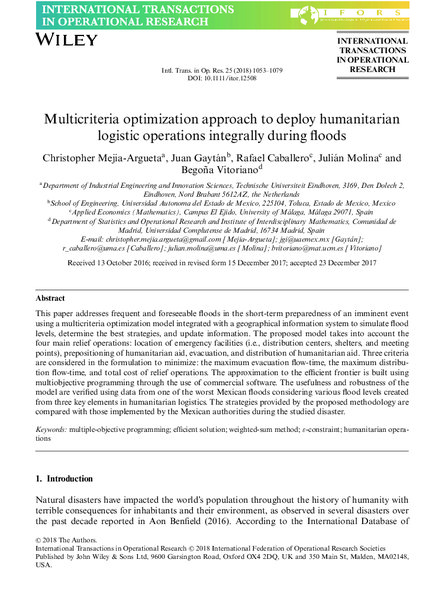
This paper addresses frequent and foreseeable floods in the short‐term preparedness of an imminent event using a multi-criteria optimization model integrated with a geographical information system to simulate flood levels, determine the best strategies, and update information. The proposed model takes into account the four main relief operations: location of emergency facilities (i.e., distribution centers, shelters, and meeting points), prepositioning of humanitarian aid, evacuation, and distribution of humanitarian aid. Three criteria are considered in the formulation to minimize: the maximum evacuation flow‐time, the maximum distribution flow‐time, and total cost of relief operations. The approximation to the efficient frontier is built using multi-objective programming through the use of commercial software. The usefulness and robustness of the model are verified using data from one of the worst Mexican floods considering various flood levels created from three key elements in humanitarian logistics. The strategies provided by the proposed methodology are compared with those implemented by the Mexican authorities during the studied disaster.
Links
Resource collections
- Floods
- Learning from crises
- UN Habitat - Urban Response Collection
- Urban Response - Urban Crisis Preparedness and Risk Reduction
- Urban Response Collection - Community Engagement and Social Cohesion
- Urban Response Collection - Economic Recovery
- Urban Response Collection - Environment and Climate Change
- Urban Response Collection - Housing, Land and Property
- Urban Response Collection - Urban Crisis Response, Recovery and Reconstruction
- Urban Response Collection - Urban Resilience